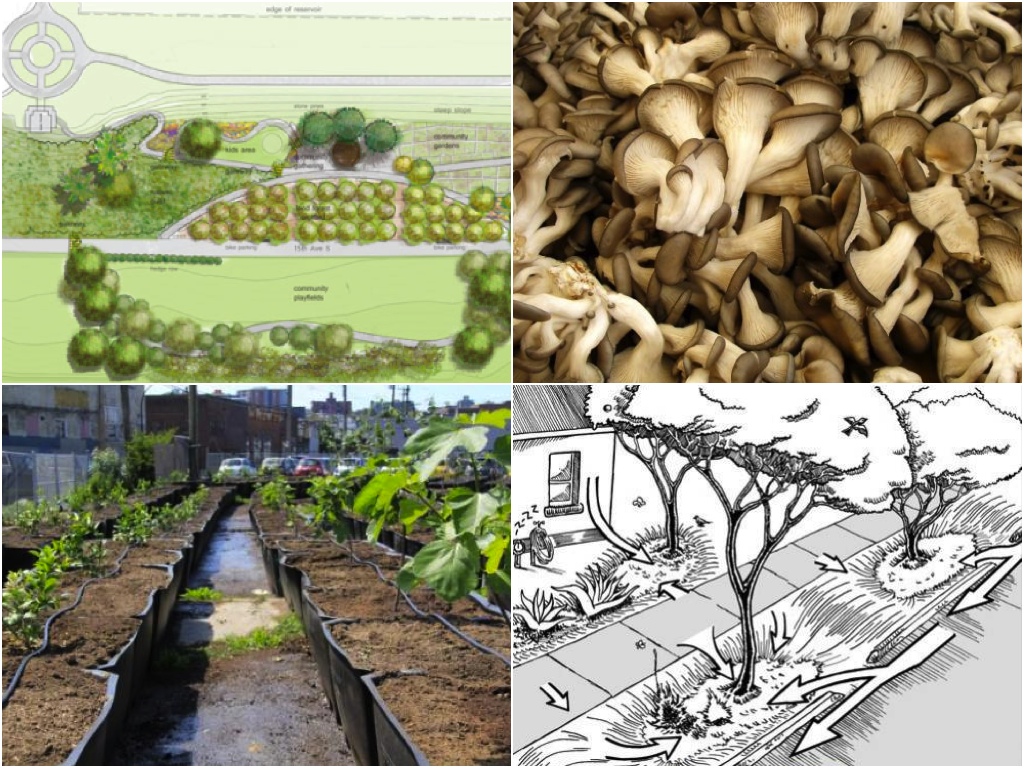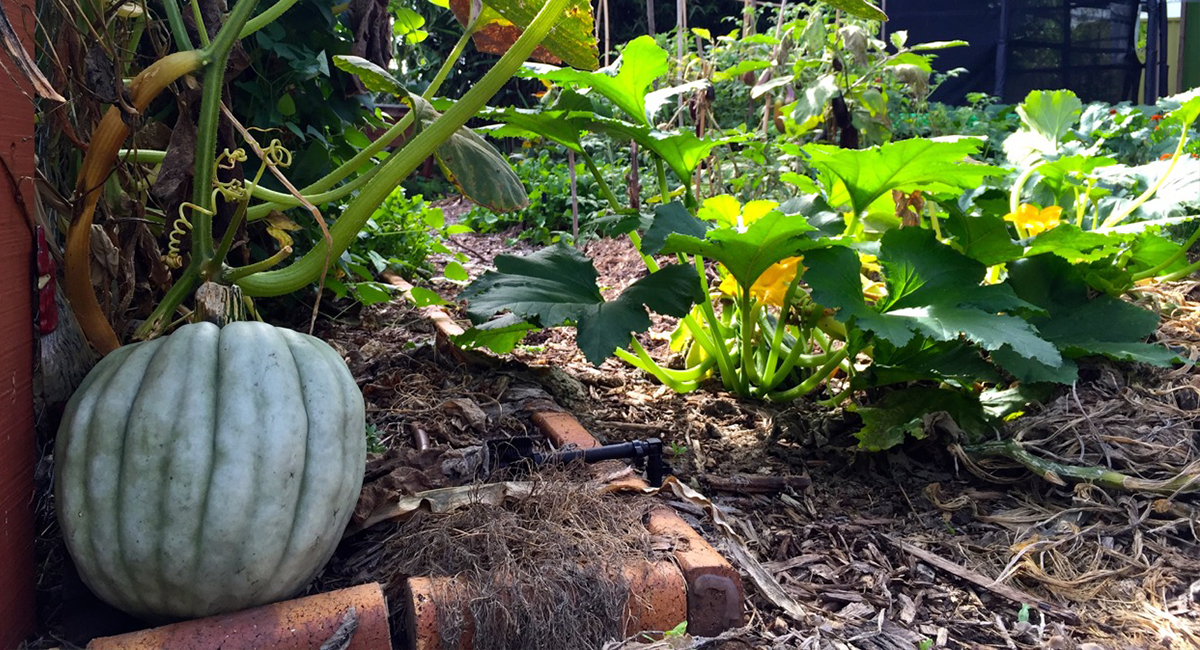Can you cut 1 Tonne of carbon pollution out of your life?
Take the challengeDid you know Permaculture was theoretically developed by two Australians Bill Mollison and David Holmgren during the 1970s?
It's one of Australia's intellectual exports with a global network of practitioners and teachers.
Haven't heard of Permaculture?
Permaculture is a set of principles that result in designing sustainable and productive systems. Systems for living, architecture, food production, land management and community.
Permaculture mimics patterns that occur in nature, to make these systems energy efficient, low cost and with high yielding results.

Images: Top left, top right, bottom left: Milkwood. Bottom right: Joe Marshall
Recently, I joined a 2-day intensive course to learn about how to grow backyard veggies with Michael Hewins from Milkwood.
Michael's methods of food cultivation are deeply based on Permaculture principles.
I got in touch with Milkwood to find out more on how Permaculture principles can help you start a garden, sustainably and harmoniously with nature.
If you don't have a backyard space for a garden, you can even start a courtyard or balcony garden, which can still be productive while helping you to maintain your connection to nature. Another gardening option is taking part in a community garden, getting your own plot, and doing your gardening there.

Here are 5 Permaculture principles to help you start a garden
1. Catch and Store Energy – "Make hay while the sun shines"
By developing systems that collect resources when they are abundant, we can use them in times of need.
Try this: Planting for your site - figure out where the sun falls and doesn't, and when. The sunnier spots are always the best place for veggies to reach their peak of flavour and nutrition.
2. Produce No Waste – "Waste not, want not"
By valuing and making use of all the resources that are available to us, nothing goes to waste.
Try this: Nutrient cycling, which means employing methods that help you close the loop and feed your garden at the same time. Ideas include worms, bokashi buckets, compost e.t.c.
3. Integrate Rather Than Segregate – "Many hands make light work"
By putting the right things in the right place, relationships develop between those things and they work together to support each other.
Try this: Companion planting is a technique that can be used to stimulate plant growth and productivity, increase resilience to pests and diseases, hide your plants from pests or mask their scent to make them harder for pests to find, and attract beneficial insects which act as pollinators, such as bees, or attract beneficial predatory insects that will eat pest insects, such as ladybirds, lacewings and hoverflies.
4. Use Small and Slow Solutions – "Slow and steady wins the race"
Small and slow systems are easier to maintain than big ones, making better use of local resources and produce more sustainable outcomes.
Try this: Propagating your own seedlings! Not only will it save you money but you become self-reliant when you grow your own seeds for food.
5. Use Edges and Value the Marginal – "Don't think you are on the right track just because it's a well-beaten path"
The interface between things is where the most interesting events take place. These are often the most valuable, diverse and productive elements in the system.
Try this: If you wanted to emphasise the Edge Effect Principle, you would perhaps lean toward curved edge garden beds, mandala design garden beds, or just use a large number of smaller rectangular beds.
These 5 principles are originally based from David Holmgren's 12 principles of permaculture design.

Why is growing your own food important?
Growing your own instills a true sense of the value of food. It's also a great way to reduce carbon pollution emissions that occur in the food supply chain, areas including transport, processing and food waste.
You can maximise the use of home-produced compost & 'worm juice' from your worm farm as fertiliser, rather using than artificial ones, and chemicals such as insecticides and herbicides.
Growing your own also makes a surprisingly powerful statement about reducing our reliance on others for basic sustenance.
So are you ready to start growing seriously great vegetables in your backyard? Check out some of Milkwood's courses, or their great blog full of articles that will help you get on your way.
If you're looking for more ways to live a low-carbon life, you can start here.
All images: Milkwood

